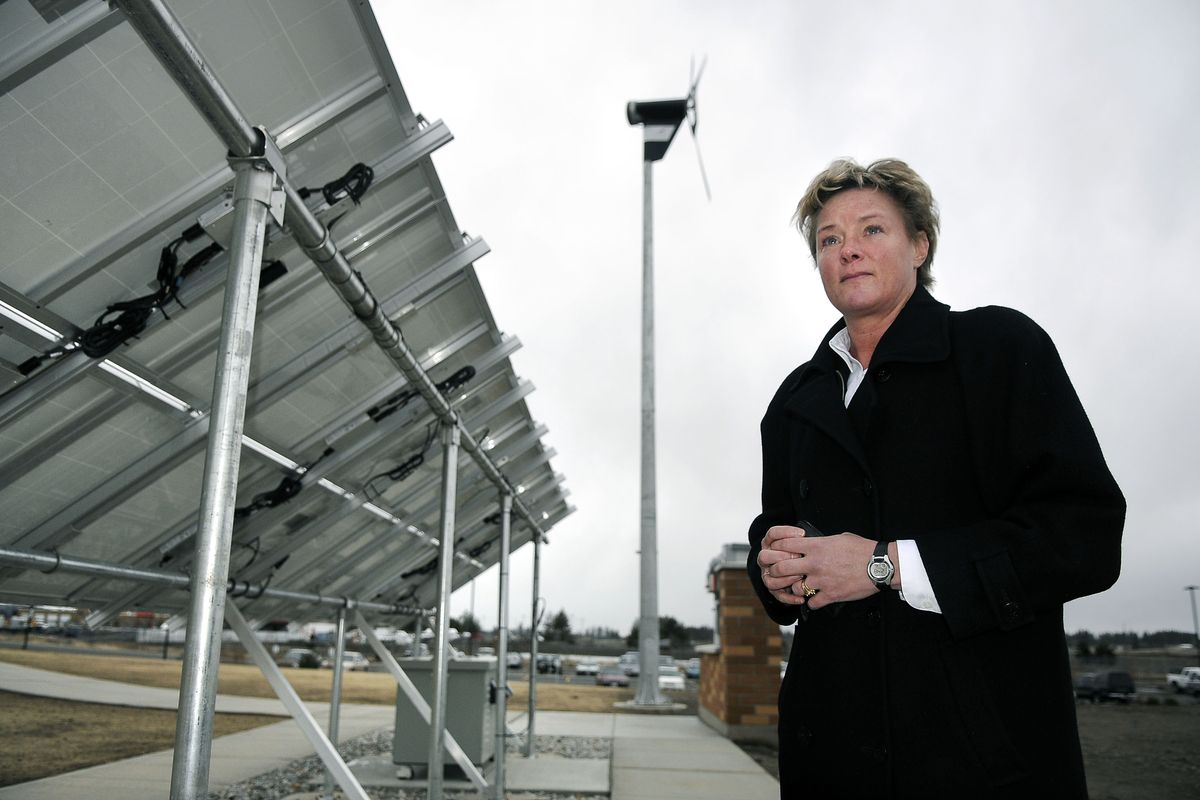Power player
Demand Energy Networks looks to broaden its market

Consolidated Edison, the utility that wired Manhattan Island, has a problem. The solution may be in Spokane.
ConEd built all its cable and associated infrastructure into tunnels now too cramped to handle more equipment, yet New Yorkers demand ever more electricity.
What they need, Doug Staker said, is a battery, one that can store electricity overnight, and release it during the morning and evening hours when consumers want it most. The vice president of Demand Energy Networks said the company has those batteries, coupled with controllers and software that will allow ConEd and other utilities to save power and money.
He said the electricity will be right in the neighborhoods or businesses – or on top of the apartment buildings – where it will be used: No new transmission or distribution lines required.
This week, DEN will pitch a pilot program to ConEd that will include the battery packages, coupled in some installations with solar panels that can charge them without tapping the electricity grid, said Randi Neilson, vice president of sales. Although so far uncommitted, ConEd has been intrigued by the technology’s potential to alleviate its distribution problems, she said.
Staker and Neilson, as well as Neilson’s husband Rob, a DEN director, are former Itron Inc. executives. They are part of a team that includes serial entrepreneur and DEN Chief Executive Officer Dave Curry, former CEO of World Wide Packets; DEN co-founder and Chief Technical Officer Scott Hamilton, a former senior engineer at Avista who developed the battery technology; and Chief Financial Officer Brett Turner, a former World Wide Packets vice president.
Curry said DEN is a good fit for Spokane because many individuals and companies in the area are experts in new energy technologies. Some, including the Neilsons and himself, also have global sales experience, he said, adding that he has discussed DEN technology with former World Wide Packets customers in the Mideast.
Incorporating storage in new transmission and distribution systems can reduce costly over-building for peak demand hours, he said, likening the situation to highway construction: Why build eight lanes for rush-hour traffic if you can instead shift traffic into off hours and get by with four lanes?
DEN is testing its system with installations at Avista Utilities and Inland Power & Light Co.
Avista Manager of Research and Development Dave Holmes said the utility is using a DEN unit in conjunction with rooftop solar panels, which typically reach peak output in late afternoon. Customer demand for electricity peaks about two hours later, he said.
The DEN batteries allow Avista to “time shift” the solar output into the peak hours, when it is more valuable to the utility, he said.
But, he added, time-shifting makes a lot more sense for utilities like ConEd that depend on coal for much of their generation.
Pacific Northwest utilities can adjust generation by ramping up and down output from the region’s dams, he said. Production from coal and nuclear plants is much less adjustable, he said, so storing electricity with battery packs like DEN’s makes more sense.
“In many different markets, it’s going to have a lot of good applications,” Holmes said. “I think they’re going to be successful.”
Inland has installed a DEN package on a pad beneath a solar array and near a windmill, both scaled for residential use. Inland Chief Engineer Richard Damiano said the cooperative wants to prove to itself and its members the technologies make economic sense for them and the utility.
The Bonneville Power Administration, which supplies 100 percent of Inland’s electricity, has reached the limit of its generating capacity, he said, and its utility customers are on their own finding additional power. With DEN units, Inland or its commercial customers may be able to conserve less expensive power for use during hours when demand and prices are much higher.
The test unit will help Inland and DEN determine what uses and what rates best suit battery storage, he said.
“Our whole process is to learn as much as we can,” Damiano said.
Curry said DEN has already figured out that 1-kilowatt units like those at Avista and Inland, which were developed with small business or residential use in mind, are not big enough for bigger commercial and utility customers. The market is hungrier for larger units, such as 30-kilowatt or 100-kilowatt, he said.
But producing those units will take more capital at a time when “people are sitting on their wallets,” Curry said.
He said DEN has two venture capital groups committed to investing but needs a third. “We’re actually doing very well, he said.
Curry and Randi Neilson declined to discuss the amount of money DEN needs, or sales projections, except to say they expect revenues to double annually as production scales up.
Neilson said the company could employ more than 100 in one year, with subcontractors like battery makers hiring many more.
Curry said DEN will move quickly when the last piece of financing falls into place.
Given the interest in technologies that can make the most of the generating and transmission resources already in place, he said, “We think the timing for this is about as good as it can be.”